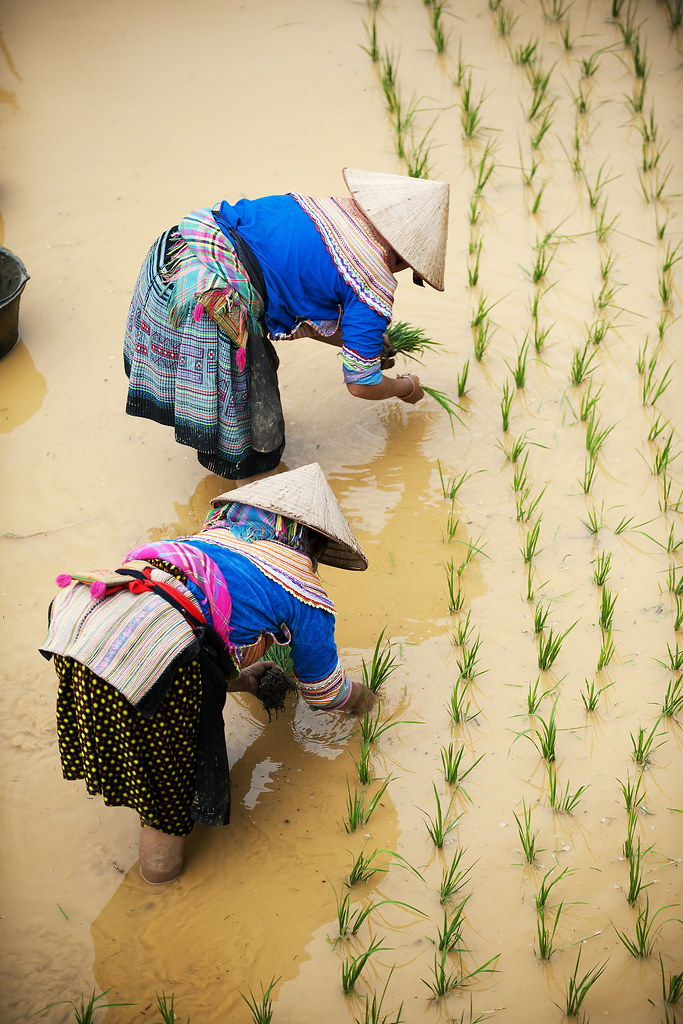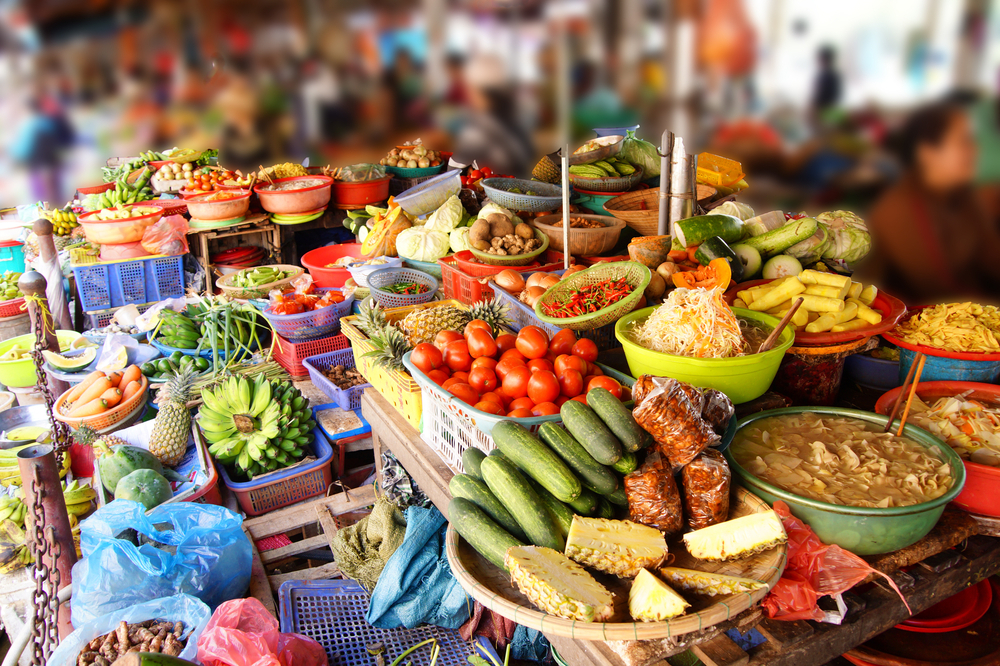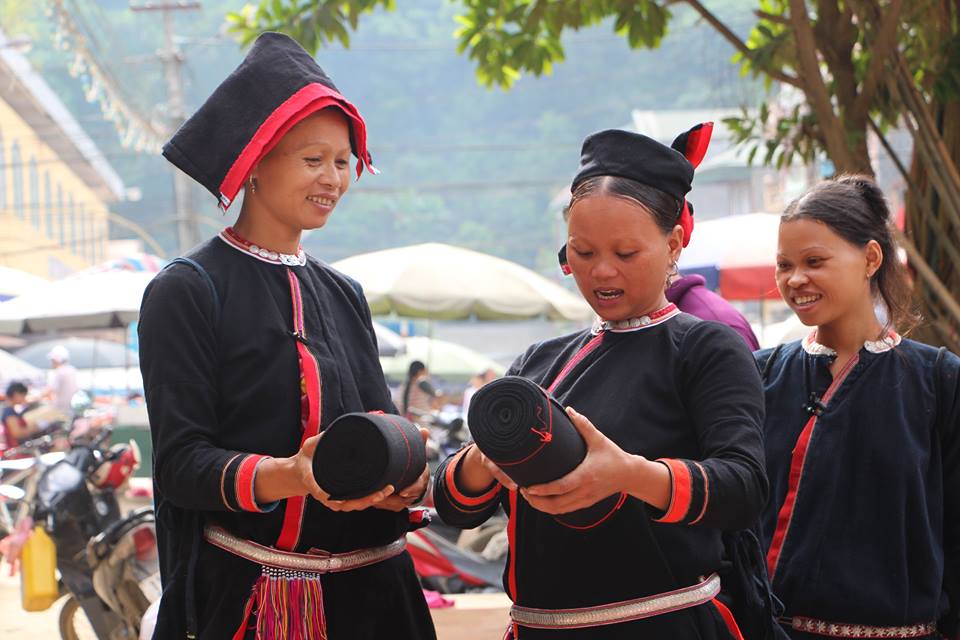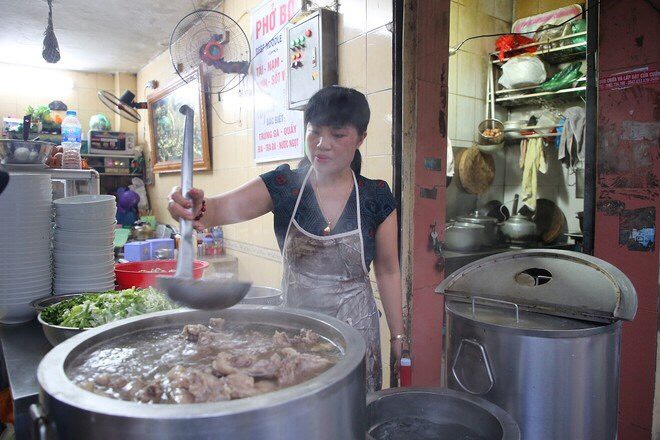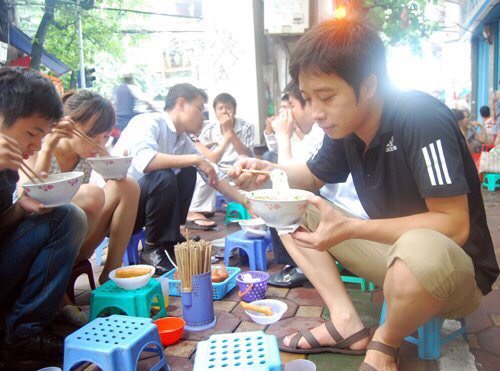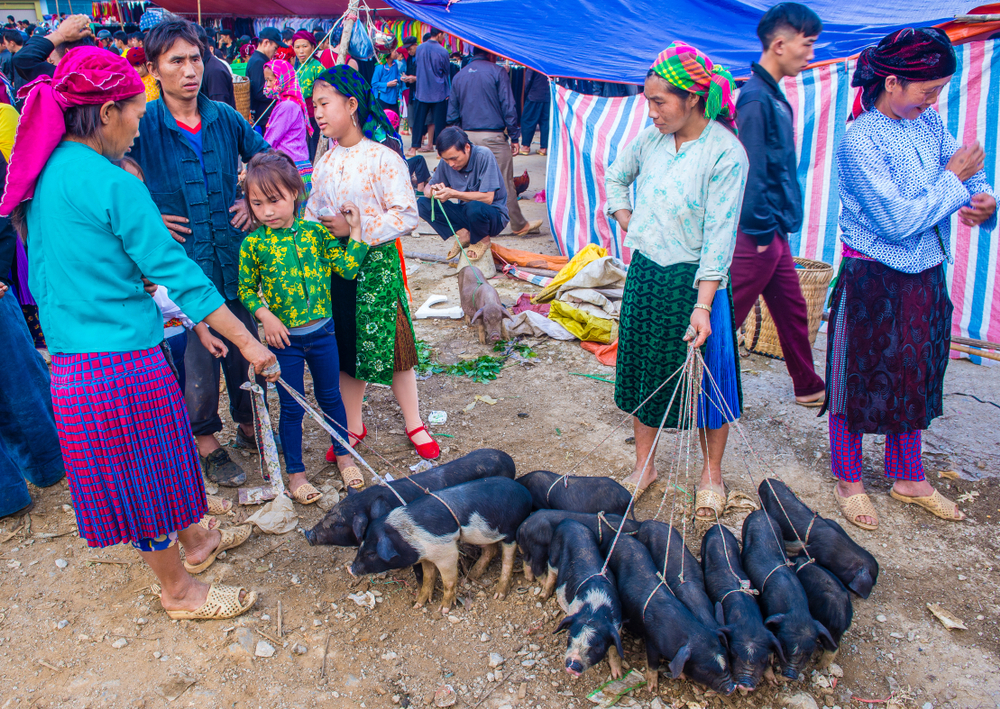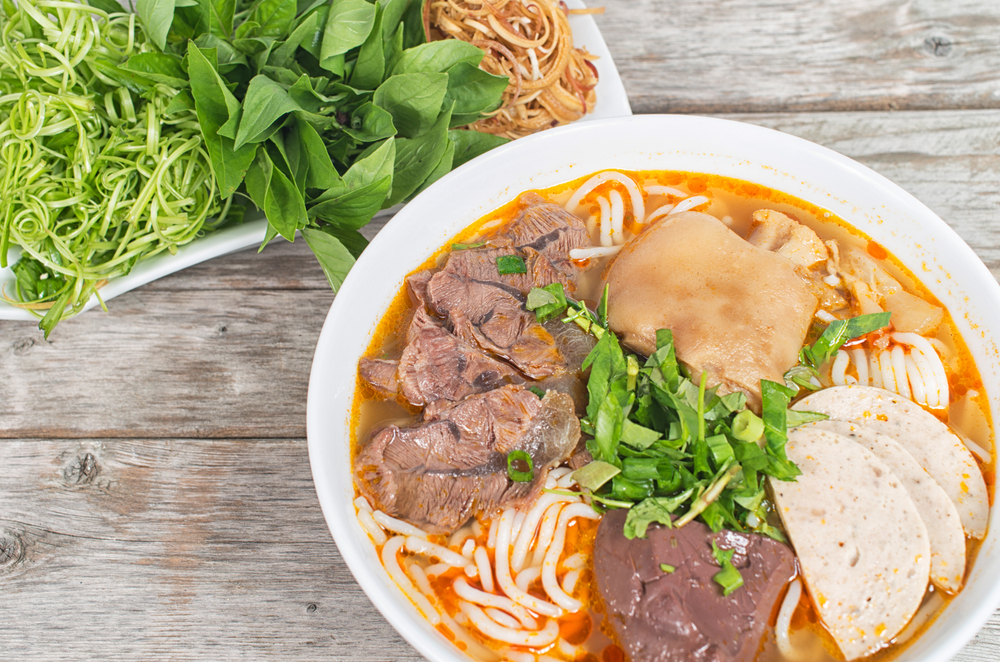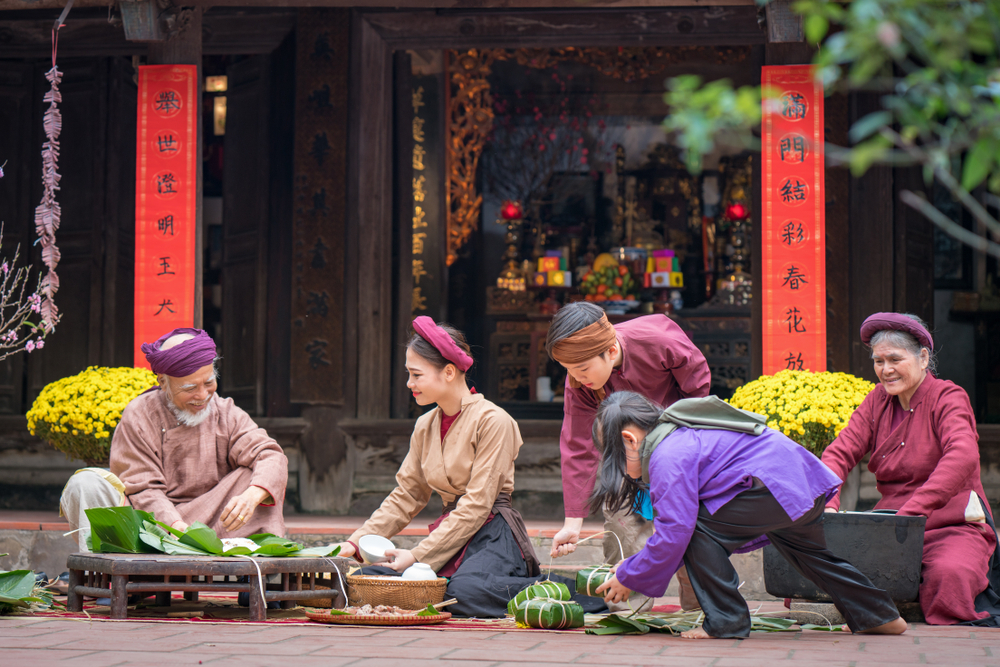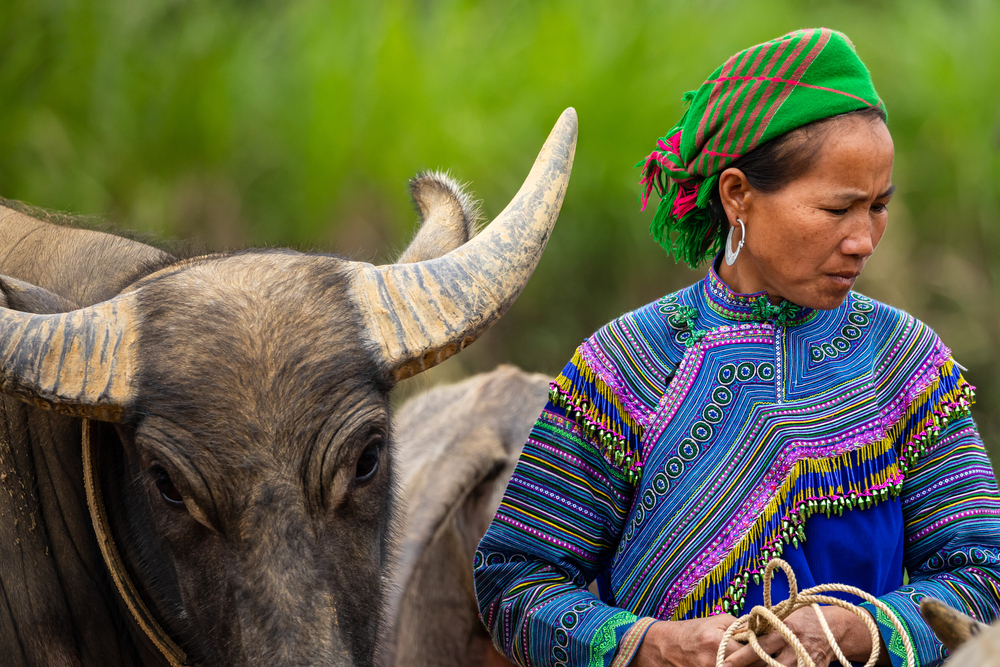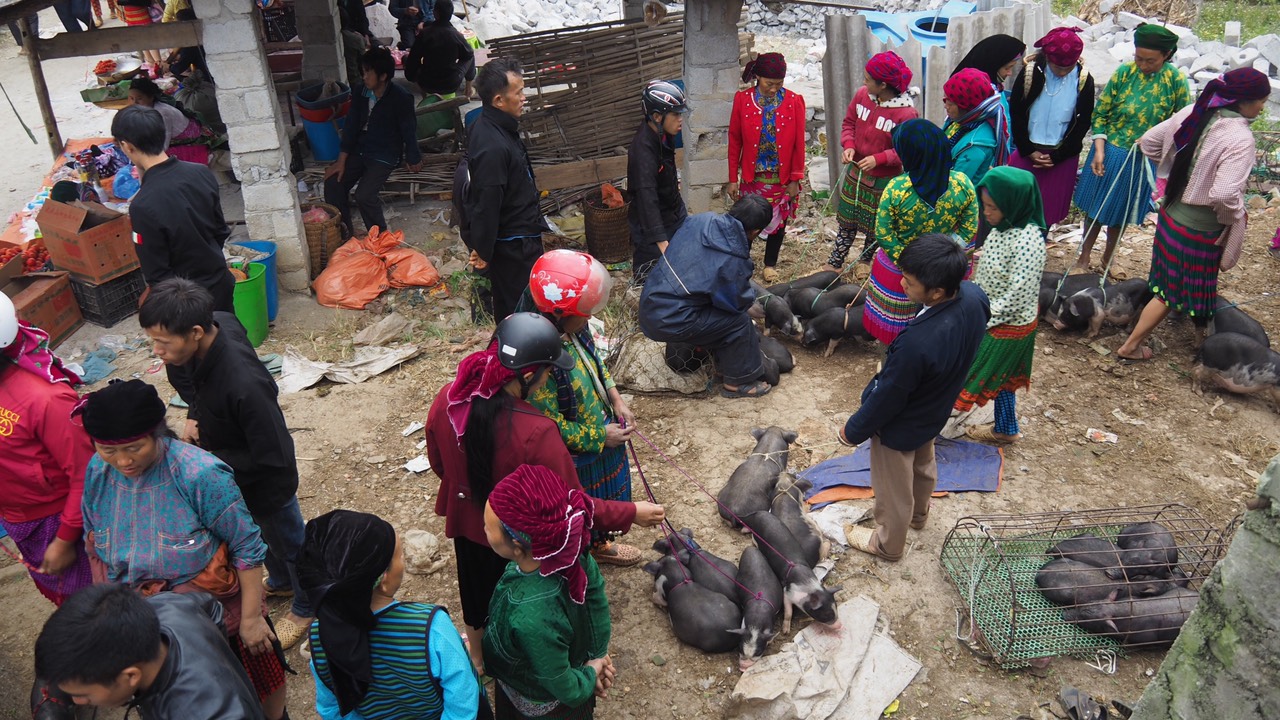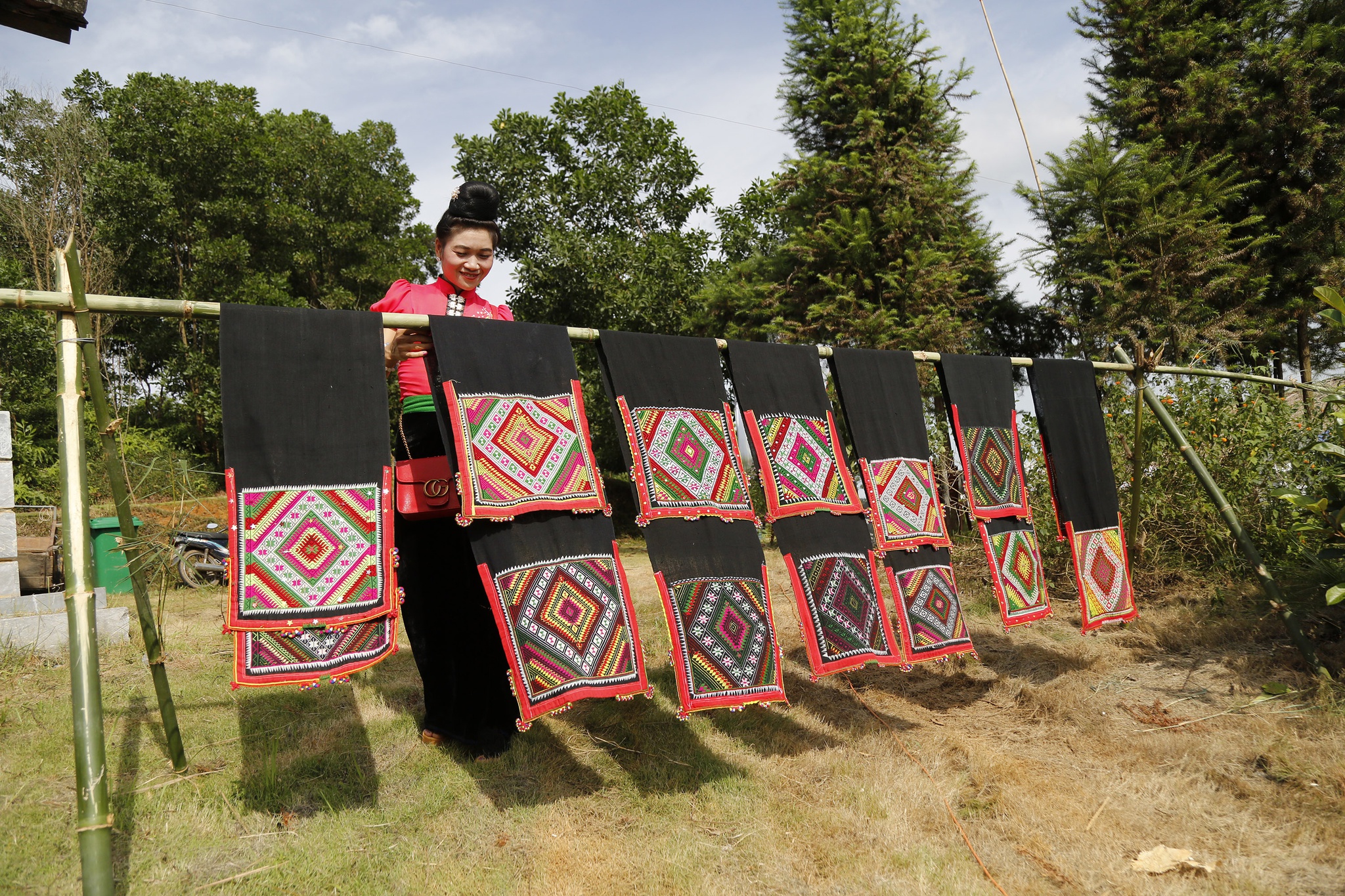
This dish is a must in Vietnam, it is an invigorating noodle soup, vitamin and fragrant as you wish.
In Vietnam it is very popular, everyone eats phở, it is the emblem of Vietnamese cuisine.
Originally this soup was with bò – beef, nowadays there are several variants: Phở gà, with chicken, and even, Phở vịt, with duck, for the most common.
There is the Phở of the south with beef dumplings, the one of the north is the most traditional, it is the one you taste in Hanoi on plastic stools in the street, at all hours of the day.
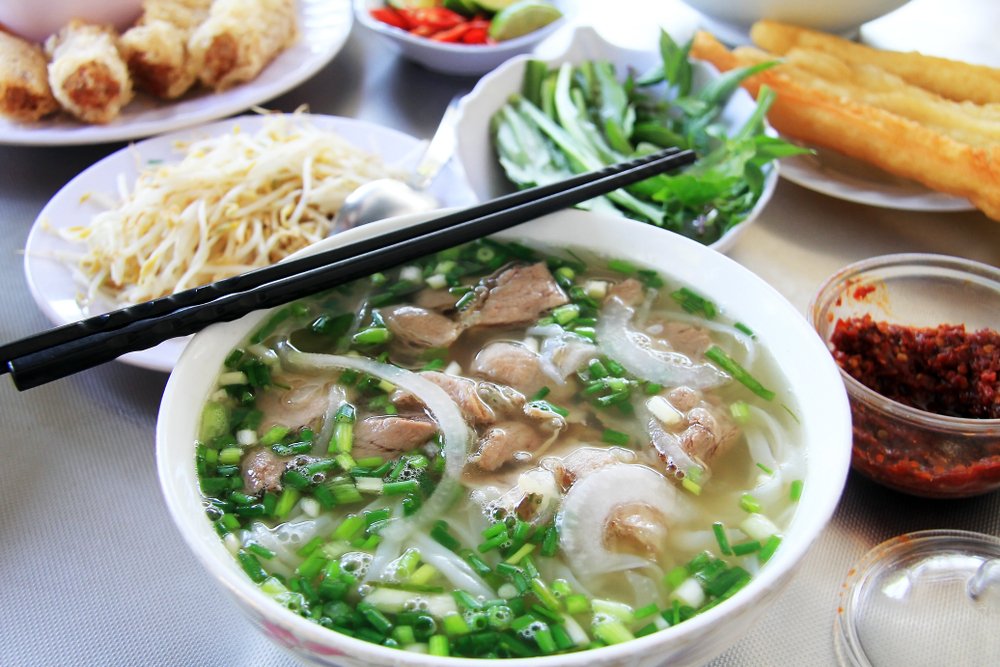
Pho, a very popular dish in Vietnam
Its origin remains uncertain, several interpretations are issued:
– One theory is that phở originated from the cuisine of the French due to their presence throughout the hundred years of colonization in Vietnam. It is said that phở was created based on the French pot-au-feu due to the fact that the pronunciation of fire is very similar to phở which is pronounced fire in Vietnamese.
This claim is far from a certainty, pot-au-feu is a French vegetable beef dish that does not look or taste like phở, the spices used to prepare phở, with the exception of onion, are not found in French cuisine. It is the herbs that predominate in taste, along with the flavor of the broth, in phở.
– Another popular theory is that phở would come from the dish – ngau yuk fan – beef rice noodle, of Cantonese migrants to Vietnam in the late 1800s.
Many Chinese merchants were active in northern and southern Vietnam in the 19th century in some cities such as Hanoi in the north, Saigon, Cholon and Cap St. Jacques in southern Vietnam.
Soup merchants, mostly Chinese at that time, carried the phở stove and pot at both ends of a large bamboo (a palanquin) from one neighborhood to another, shouting the name of the food to attract customers.
Mr. Bich Nguyen, a Vietnamese scholar, says that the name phở derives from the Mandarin Chinese “fen,” which means “rice noodles” the ear would have distorted the pronunciation to hear: fire (which is the pronunciation of phở ) and not fen.
Although it is difficult to dispute the Chinese root in the origin of phở, it should be noted that like Pot-au-Feu, ngau yuk phan does not share all the similarities of phở. Perhaps phở is just a variant of Chinese ngau yuk phan that would have evolved with the uniqueness of Vietnamese cuisine (in particular, the use of fish sauce).
– Some still claim that the soup pre-existed the presence of the French.
The origin of pho could be the xao trâu soup which was very popular in the North in the early 20th century. Buffalo meat is sautéed and then put together in a bowl with bun noodles and buffalo bone broth.
The beef used only for agriculture, is requisitioned by the French for its meat, the colonists then resell the remains of bones and cartilages to Hanoi butchers at derisory prices.
Soup sellers saw this new cheap food as an opportunity to diversify their recipes, especially the popular soup called xao trâu.
Beef replaced the more expensive and scarce buffalo meat. Buffalo is only killed and eaten in exceptional occasions, it is an indispensable working animal for the peasants.
We eat it on the sidewalk
The Chinese merchants, workers in Nam Dinh, sell this soup to their compatriots who, by going up the Red River, spread the dish little by little throughout Vietnam.
– And so, one more theory: In the province of Nam Dinh, which was at the time an industrial center of textile, the Vietnamese cooks would have invented a nourishing soup to satisfy the needs of the workers and the French.
They used local ingredients (rice noodles) and beef – the new meat resource of that time. Then, the villagers of Van Cu make and deliver the phở to Hanoi that’s why nowadays in Hanoi, many of the soup sellers are from this village.
Everyone will take what suits them from these theories, one certainty though, phở does not leave one indifferent! Its subtlety will leave you with a taste of revient y!
The ingredients:
For the broth: beef bones (some add pork feet and rinds, the recipe changes according to the region), onions – spices (cinnamon, cardamom, star anise, ginger) – pepper – salt.
For the dish, the bowl: rice noodles (bun) – tender beef in small quantity – herbs (coriander, basil, mint and others) – lime – nuoc-mâm (fish sauce) and chilli of course.
To all this you add a pinch of patience, the broth must cook for a long time, a share of inventiveness with your own choice of herbs and their dosage and by closing your eyes, by smelling you will travel for sure!
Addresses for a good pho :
Pho Thìn, 13 Lò Đúc, Hai Ba Trung, Hanoi
Pho Bat Dan, 49 Bát Dàn, Hoan Kiêm, Hanoi
Pho Lý Quốc Su, 10 Lý Quốc Su, Hoan Kiêm, Hanoi…















